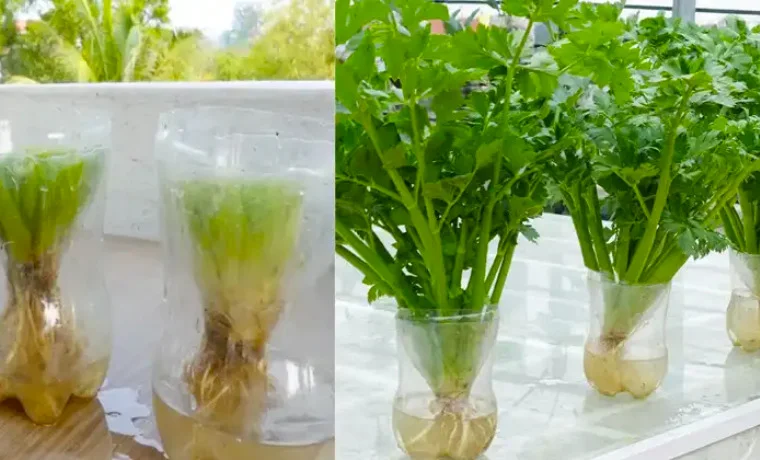Introduction: Celery, with its crisp texture and distinctive flavor, is a versatile vegetable that adds depth and freshness to a wide range of culinary dishes. While commonly purchased from grocery stores, growing celery at home offers a rewarding experience that allows you to enjoy the freshest produce straight from your garden. In this guide, we’ll explore a sustainable and straightforward method for cultivating celery using reused plastic bottles, empowering you to embark on a journey of homegrown goodness.
The Benefits of Reused Plastic Bottles: Repurposing plastic bottles for gardening not only reduces waste but also provides a convenient and cost-effective solution for container gardening. By giving plastic bottles a second life as planters, you can minimize your environmental footprint while creating a thriving garden in even the smallest of spaces. Additionally, plastic bottles are lightweight, portable, and easy to work with, making them ideal for urban gardeners and those with limited gardening resources.
Preparing Your Plastic Bottle Planters: To begin your celery-growing adventure, gather clean, empty plastic bottles of various sizes, ensuring they have been thoroughly rinsed and dried. Using a sharp knife or scissors, carefully cut each plastic bottle in half, creating two separate pieces – one serving as a container and the other as a protective dome or cover. Poke several drainage holes in the bottom of each container to allow excess water to escape, preventing waterlogging.
Starting Celery from Seeds: Celery can be grown from seeds or from the base of store-bought celery stalks, but starting from seeds offers a more rewarding and educational experience. Fill the bottom half of each plastic bottle with a mixture of potting soil and compost, leaving enough space to accommodate the celery seedlings. Sow the celery seeds evenly across the soil surface, lightly pressing them into the soil and covering them with a thin layer of additional soil.
Caring for Your Celery Seedlings: Place the plastic bottle planters in a sunny location with indirect sunlight, such as a windowsill or balcony, where they will receive at least six to eight hours of light per day. Keep the soil consistently moist but not waterlogged, watering the celery seedlings sparingly to prevent damping-off and root rot. As the seedlings grow, thin them out to ensure adequate spacing between plants, allowing them to develop strong root systems and lush foliage.
Transplanting Celery Seedlings: Once the celery seedlings have developed several sets of true leaves and are sturdy enough to handle, they can be transplanted into larger containers or directly into the garden soil. Carefully remove the seedlings from the plastic bottle planters, taking care not to disturb the delicate roots, and transplant them into well-prepared soil with plenty of organic matter.
Harvesting Your Homegrown Celery: With proper care and attention, your homegrown celery will mature over the course of several months, reaching its full potential as the stalks grow tall and crisp. Harvest the celery stalks when they have reached the desired size, using a sharp knife or garden shears to cut them from the base of the plant. Enjoy the fresh, flavorful taste of your homegrown celery in salads, soups, stir-fries, and snacks, savoring the satisfaction of growing your own food.
Conclusion: By repurposing plastic bottles as planters and embracing a sustainable approach to gardening, you can cultivate a thriving crop of celery that nourishes both body and soul. With a little creativity and ingenuity, you can transform everyday materials into a flourishing garden that yields fresh, flavorful produce for you and your family to enjoy. Embrace the simplicity and joy of growing celery in reused plastic bottles, and reap the rewards of homegrown goodness straight from your garden.

